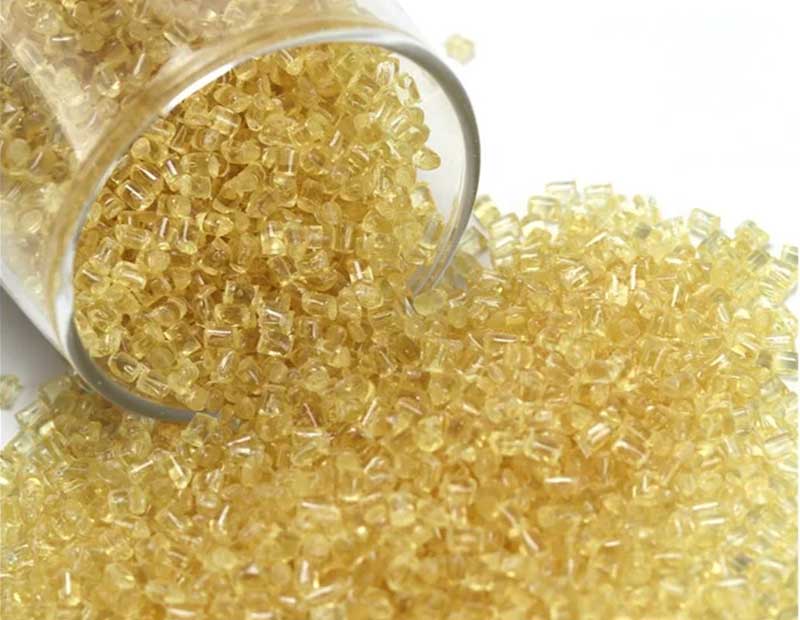Polyethersulfone (PES) Material: Properties, Applications and Maintenance
Introduction to PES Material
Polyethersulfone (PES) is a High-performance thermoplastic belonging to the Polysulfone family, known for its exceptional thermal stability, chemical resistance, and mechanical properties. This amorphous polymer exhibits a glass transition temperature (Tg) of 220-230°C and can maintain dimensional stability at continuous service temperatures up to 180°C. With a density of 1.37 g/cm³, PES offers an excellent balance between weight and performance characteristics.
Key characteristics that distinguish PES from other engineering plastics include its inherent transparency (light transmission of 88% at 1mm thickness), outstanding hydrolytic stability (water absorption of only 0.43% after 24-hour immersion), and exceptional flame resistance (UL94 V-0 rating at thicknesses as low as 0.8mm).

Technical Properties of PES
The mechanical properties of PES are particularly noteworthy, with a tensile strength of 84 MPa and a flexural modulus of 2.6 GPa at room temperature. Even at elevated temperatures (150°C), PES retains approximately 70% of its room temperature mechanical properties. The material demonstrates excellent creep resistance with less than 1% strain after 1000 hours under 20 MPa stress at 100°C.
Electrically, PES exhibits a dielectric strength of 16 kV/mm and volume resistivity of 10^16 Ω·cm, making it suitable for high-voltage applications. Its thermal conductivity measures 0.18 W/m·K, while the coefficient of thermal expansion ranges from 5.5 × 10^-5 /K below Tg to 5.5 × 10^-4 /K above Tg.
Applications of PES Material
The unique combination of properties makes PES suitable for demanding applications across various industries:
Medical Devices: PES is widely used in hemodialysis membranes (pore sizes 0.1-1.0 μm), surgical instrument components, and sterilization trays due to its biocompatibility (ISO 10993 compliant) and ability to withstand over 1000 steam sterilization cycles.
Water Filtration: PES membranes with molecular weight cut-offs ranging from 1 kDa to 300 kDa are employed in ultrafiltration systems, demonstrating chemical resistance to pH ranges from 1-13 and operating pressures up to 10 bar.
Aerospace: Aircraft interior components utilize PES for its flame-smoke-toxicity (FST) compliance, with heat release rates below 65 kW/m² and smoke density under 200 in the Boeing 2.5-minute test.
Electrical Engineering: PES serves as insulation material in transformers and capacitors, maintaining dielectric properties at temperatures up to 200°C and exhibiting comparative tracking index (CTI) values above 175V.
Food Processing: PES finds application in food contact surfaces and processing equipment, meeting FDA 21 CFR 177.2440 requirements with extractables below 0.1 mg/in² after prolonged exposure to food simulants.
Maintenance and Care of PES Products
Proper maintenance ensures optimal performance and longevity of PES components:
Cleaning Procedures: For medical and food-grade applications, PES can be cleaned using steam at 121°C for 20 minutes or chemical disinfectants with pH between 2-11. Avoid abrasive cleaners that may scratch surfaces (Ra roughness should remain below 0.8 μm).
Thermal Management: While PES can withstand short-term exposure to 200°C, prolonged operation above 180°C may lead to gradual property degradation. Thermal cycling should be limited to rates below 5°C/min to prevent stress cracking.
Chemical Exposure: Although resistant to most acids and bases, prolonged contact with concentrated sulfuric acid (> 96%) or chlorinated solvents may cause swelling (> 3% dimensional change).
Mechanical Stress: Avoid continuous static loads exceeding 50% of the material's yield strength (92 MPa at 23°C) to prevent creep deformation. Impact resistance remains stable down to -100°C (Izod impact strength of 85 J/m).
Storage Conditions: Store PES products in environments below 40°C and relative humidity under 60% to prevent moisture absorption (equilibrium moisture content 0.6% at 50% RH).
Processing Considerations for PES
When manufacturing with PES, specific processing parameters must be observed:
Injection molding typically requires barrel temperatures of 340-380°C and mold temperatures of 140-180°C. The melt flow rate (MFR) ranges from 15-50 g/10min (360°C/2.16kg). Drying before processing is critical, with recommended conditions of 150°C for 4 hours to reduce moisture content below 0.05%.
For extrusion applications, draw-down ratios should be maintained between 1.5:1 to 3:1 for consistent wall thickness. Post-processing annealing at 200°C for 1-2 hours can relieve internal stresses, improving dimensional stability by up to 30%.






